All products featured are independently chosen by us. However, SoundGuys may receive a commission on orders placed through its retail links. See our ethics statement.
Samsung Galaxy Buds 2 vs Apple AirPods (3rd generation)
Published onAugust 21, 2023
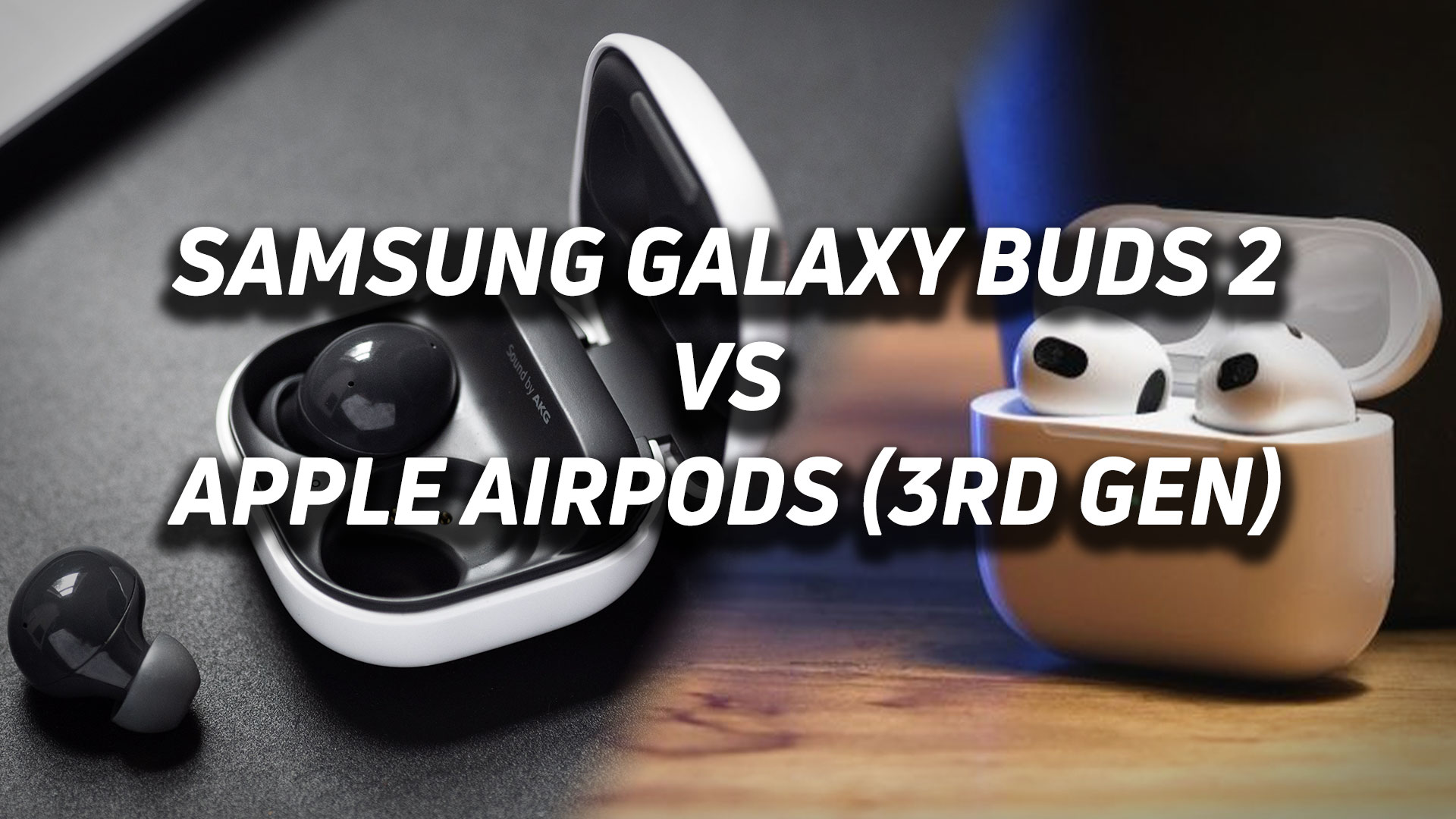
Apple has dominated the true wireless market ever since the company largely established it, delivering unsealed audio with the infamous, but no less iconic design of the AirPods. However, while this iOS-friendly pair of earbuds gets the biggest spotlight, Samsung’s true wireless offerings have been steadily gaining popularity — especially among people who don’t reside in Apple’s walled garden. Both companies recently released their newest entries, the Apple AirPods (3rd generation) and Samsung Galaxy Buds 2.
But in the battle of the Apple AirPods (3rd generation) vs Samsung Galaxy Buds 2, who wins?
Editor’s note: this article was updated on August 21, 2023 to add more mic samples.
The Apple AirPods (3rd generation) vs Samsung Galaxy Buds 2: Which is easier to use?
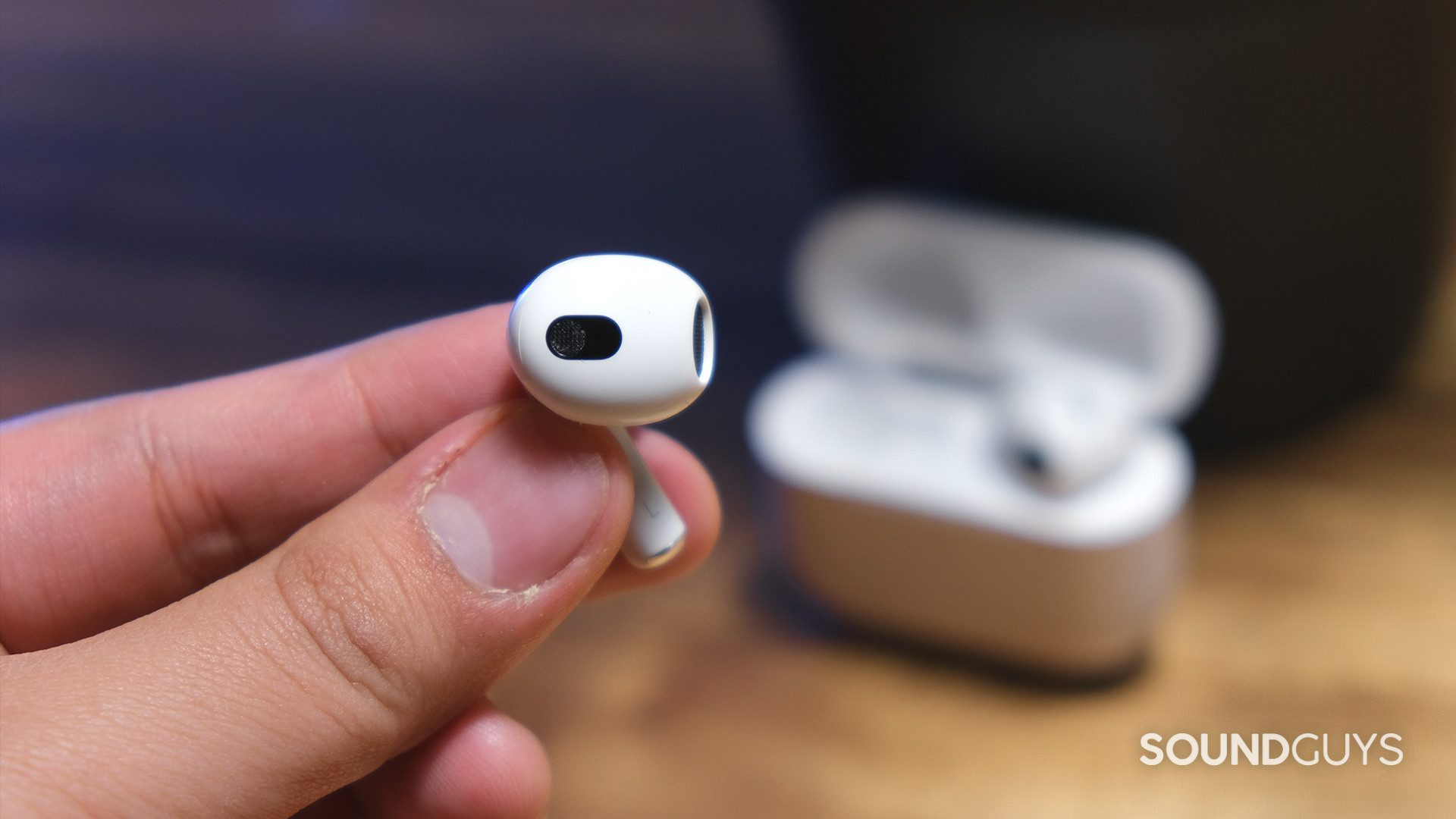
Which pair of true wireless earbuds is easier to use really depends on what device you own. If you use an iPhone, the overall experience is going to be easier with the AirPods (3rd generation) than with the Galaxy Buds 2. With that said, the two have pretty different fundamental experiences, so it should be fairly easy to figure out which set of buds is for you regardless of your smartphone’s operating system.
The Galaxy Buds 2 features a pretty standard look and feel for true wireless earbuds from Samsung, and really true wireless earbuds in general. The buds are small and rounded, with touch-sensitive panels and silicone ear tips. The buds fit securely in your ears and come with multiple sizes of ear tips, so establishing a decent seal requires little effort. The touch controls allow for a degree of on-ear control. Here’s what you can do by default:
| Action | Either earbud |
|---|---|
One tap | Play/pause |
Two taps | Next track; answer/end call |
Hold | Previous track; custom option; decline call |
Conversely, the Apple AirPods (3rd generation) features the same unsealed design of its predecessors, now with a slightly rounder bud shape intended to make for a more comfortable fit. Similar to the AirPods Pro, the AirPods (3rd generation) has indentations in each stem, and you can squeeze them to control playback and more. Here’s what the controls are by default:
| Action (stems) | Either earbud |
|---|---|
One tap | Play/pause |
Two taps | Skip forward |
Three taps | Previous track |
Press and hold | Siri |
"Hey Siri" | Change volume, request directions, playback control, receive messages, and more |
However, the matchup gets a little less even as you look at the features. Notably, the Samsung Galaxy Buds 2 features active noise canceling (ANC), something the AirPods (3rd generation) lacks. There’s also an ear tip fit test in the Samsung Galaxy Wearable app, so you can get figure out the ideal tip size get the best isolation performance possible (more on the app in a bit).
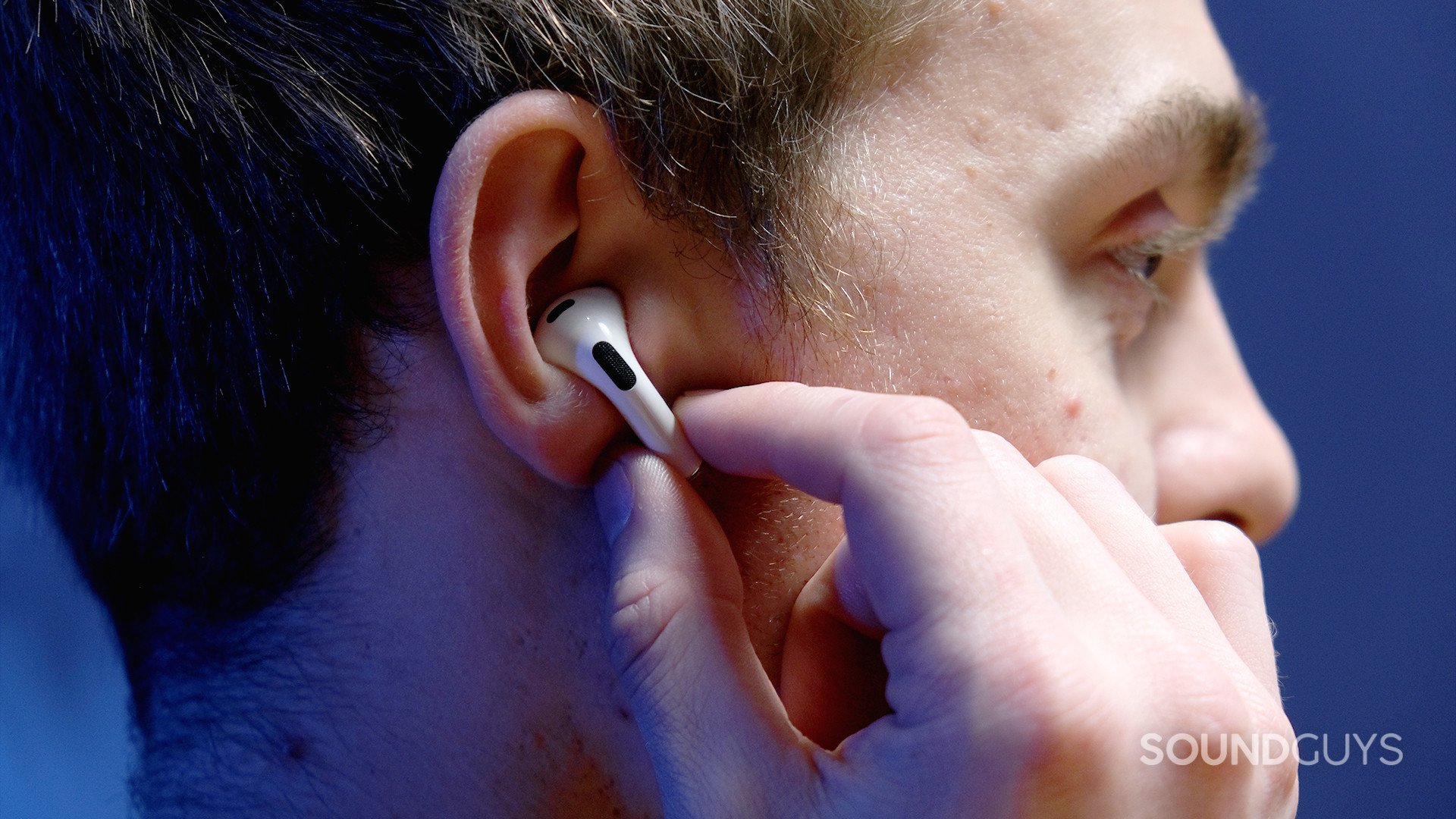
The Apple AirPods (3rd generation) brings some of the bells and whistles from the AirPods Pro, most notably Apple spatial audio, which creates a virtual surround sound for media mastered for Dolby Atmos and 5.1 or 7.1-channel formats. Apple’s new generation true wireless earbuds also incorporate accelerometers for head tracking, so the audio source will sound locked in place, regardless of how you turn your head. As of the newest iOS update, the spatial audio also has a “spatialize stereo” setting, which will let you automatically convert non-Atmos media into spatial sound — it doesn’t work as well as the stuff made specifically for it, but it’s a neat gimmick that offers a new way to experience old media.
Both earbuds feature IP ratings, which means they should be fine for working out. The Samsung Galaxy Buds 2 is IPX2 rated, which means it’s protected from sweat. The Apple AirPods (3rd generation) is IPX4 rated, which covers splashes of water too. However, these earbuds definitely aren’t ideal for the same kinds of workouts. After all the unsealed fit of the AirPods means you’re going to hear everything in the gym, but it could be considered a safety feature if you’re out for a run (provided you can get the buds to fit securely).
Which Bluetooth codecs does the Apple AirPods (3rd generation) and Samsung Galaxy Buds 2 support?
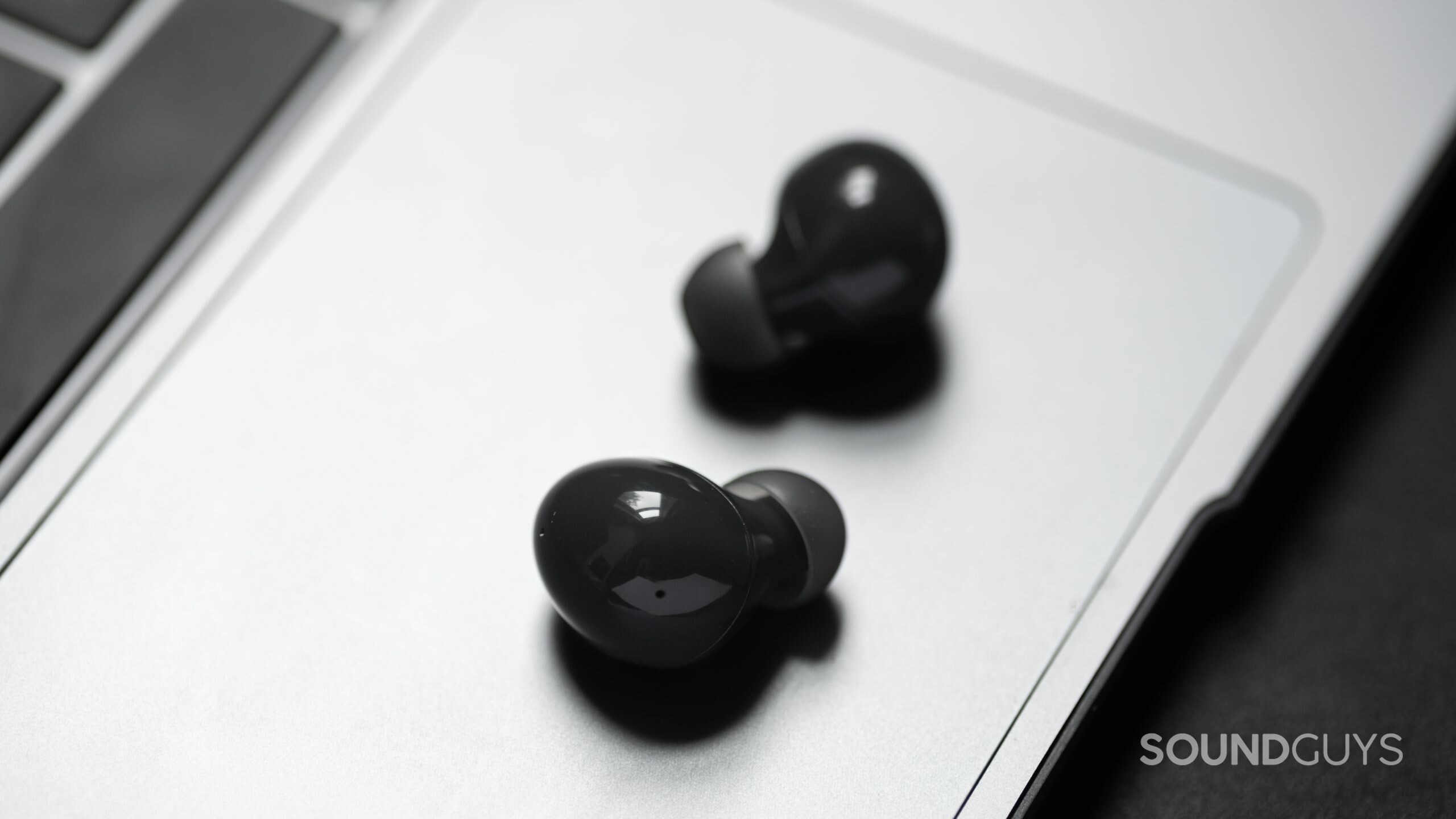
The Apple AirPods (3rd generation) and Samsung Galaxy Buds 2 feature similar connection options, but a few things give Samsung’s true wireless earbuds the edge. The Apple AirPods (3rd generation) uses Bluetooth 5.0 and supports the default SBC, as well as AAC, which makes sense — iPhones only use these two codecs, after all.
The Galaxy Buds 2 supports SBC and AAC too, but it also uses the Samsung Scalable Codec, which only works on Samsung devices. Samsung’s codec works a lot like aptX Adaptive, constantly balancing between sound quality and connection strength. It doesn’t hit the same sound quality of high-end codecs like LDAC, but it’s a step up from SBC and is more reliable on (Samsung) Android devices than AAC.
The Galaxy Buds 2 also uses Bluetooth 5.2, which means it will handle the power draw of Bluetooth connections a little more efficiently at greater ranges. Additionally, Bluetooth 5.2 means that these true wireless earbuds may one day support the new LC3 codec when it eventually replaces SBC as the default Bluetooth codec.
Is Apple’s or Samsung’s software better?
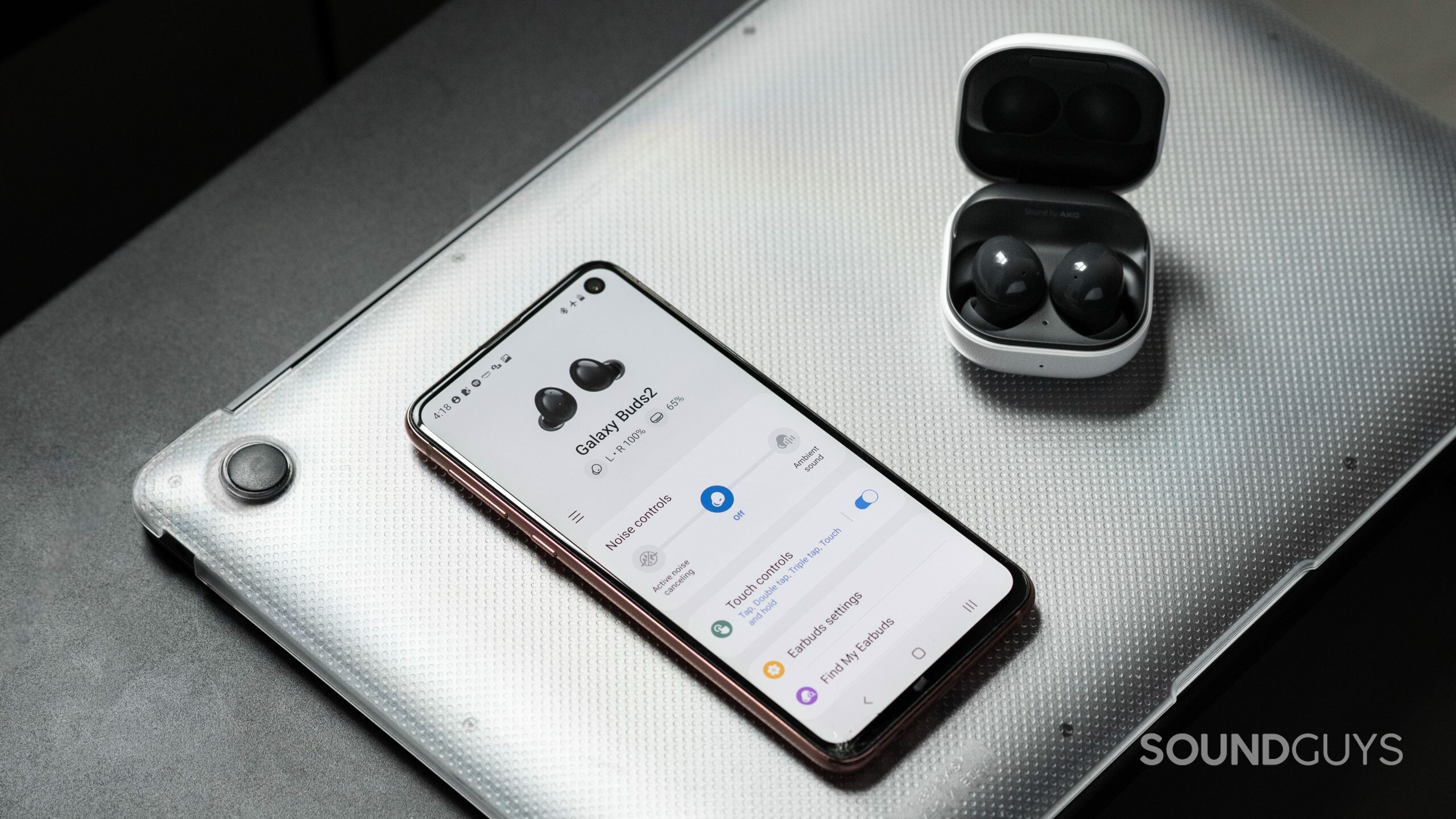
Apple and Samsung have taken very different approaches to the software situation for their true wireless earbuds, but the headsets have two things in common — the software is pretty integral to the overall experience, and each pair of buds is locked to a single operating system.
Just like all other products in the line, the Apple AirPods (3rd generation) uses the iOS (or iPadOS) Settings app for control and customization. This means, that only users with iPhones or iPads can install firmware updates or access premium features like spatial audio, Find My AirPods, or hands-free Siri. In the settings app, you can also customize what happens when you press the force sensors on each stem, and toggle automatic ear detection.
The Samsung Galaxy Buds 2 uses a more traditional app for software features: the Galaxy Wearable app. This app is only available on Android, so iPhone users will miss out on firmware updates, the ability to toggle between ANC and ambient sound mode, access to the ear tip fit test, and the app’s selection of EQ presets. There’s no custom EQ option here, but the presets still represent more customization than the Apple experience, which relies on the hands-off Adaptive EQ feature.
Does the AirPods (3rd generation) or Galaxy Buds 2 have better battery life?
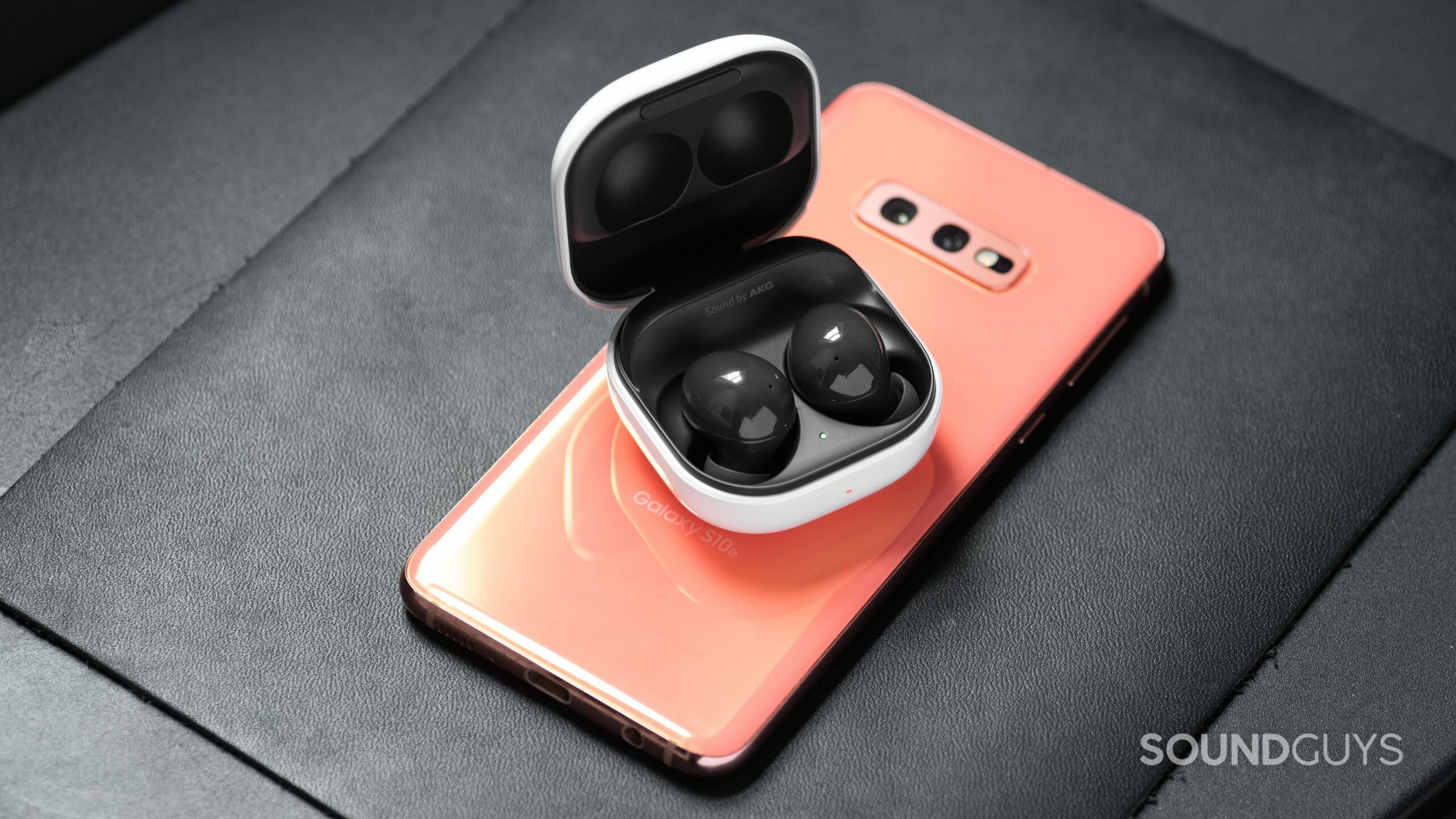
The AirPods (3rd generation) makes improvements in battery performance over its predecessors, and that’s enough to give it the edge in this match up. At a constant music output peaking at 75dB(SPL), the Apple AirPods (3rd generation) lasted 6 hours, 21 minutes on a single charge. Additionally, the AirPods charging case holds enough juice for an additional four charge cycles, which means over 30 hours overall. The charging case now also supports the new MagSafe charger (which is just a magnetically secured Qi wireless charger), as well as regular wireless charging and wired charging over Lightning connections.
The Samsung Galaxy Buds 2 isn’t too far behind the AirPods, lasting 5 hours and 9 minutes on a single charge with ANC on under the same testing conditions. The Galaxy Buds 2 charging case offers 15 hours of listening time, which makes for just over 20 hours cumulatively.
Both pairs of true wireless earbuds support fast charging to an equal degree. With 5 minutes in the charging case, both the AirPods (3rd generation) and Galaxy Buds 2 will get an hour of playback time.
The Samsung Galaxy Buds 2 cancels noise far better than the AirPods (3rd generation)
However, while these two pairs of true wireless earbuds sound great in ideal (quiet) conditions, only one sounds good in non-ideal conditions. The unsealed fit of the AirPods (3rd generation) means you’ll hear pretty much any environmental noise, so auditory masking will almost certainly be an issue. In comparison — if comparison is even really warranted — the sealed fit and ANC of the Samsung Galaxy Buds 2 means the isolation performance should let you listen comfortably just about anywhere.
It’s not just about sound quality, though. Bad auditory masking can lead people to turn up the volume to unsafe levels to compensate — noise-induced hearing loss isn’t something to mess around with.
Does the Samsung Galaxy Buds 2 or Apple AirPods (3rd generation) sound better?
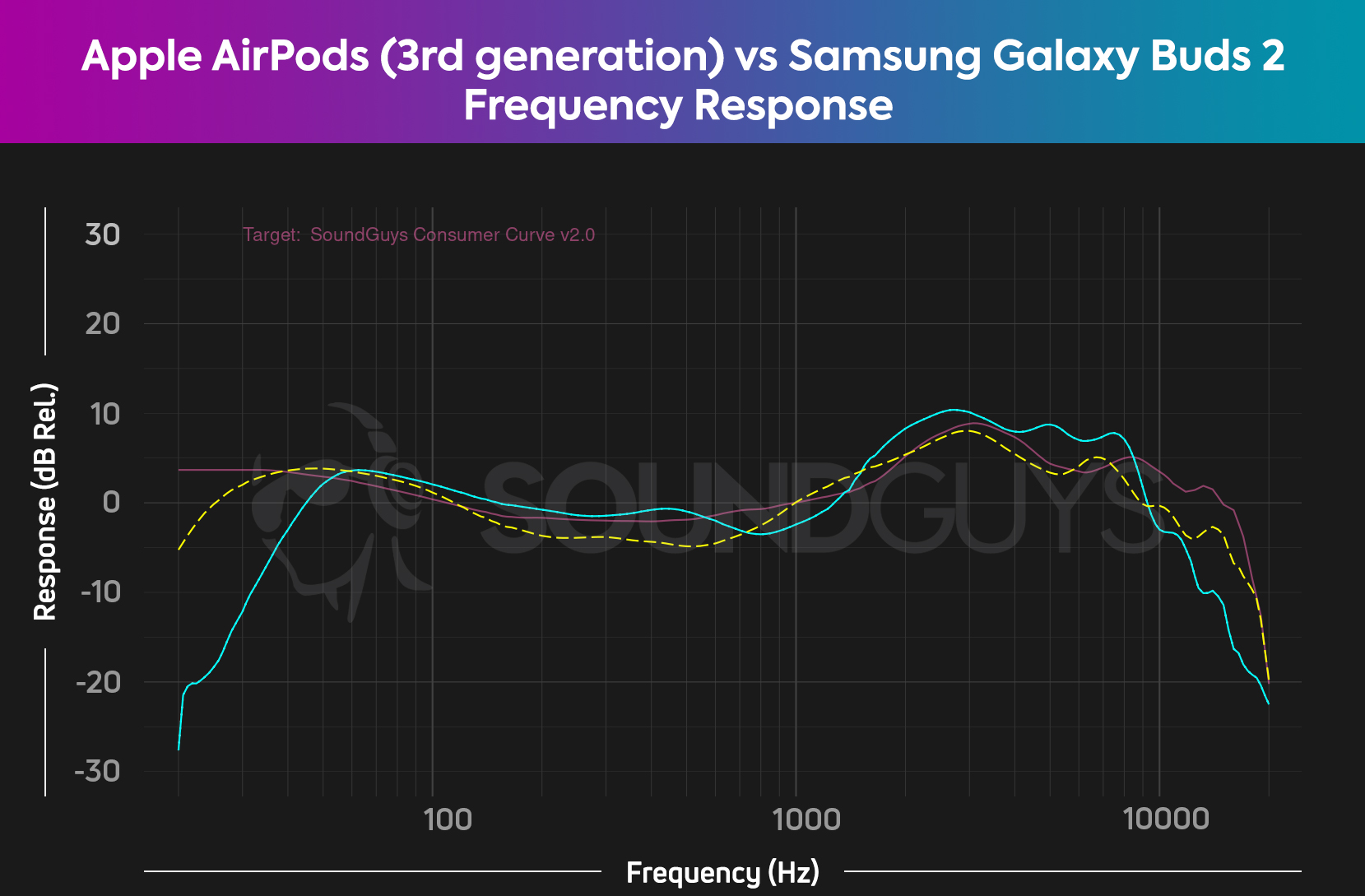
Aside from the typical shortcomings of an unsealed fit, the Samsung Galaxy Buds 2 and Apple AirPods (3rd generation) are pretty competitive with each other in terms of frequency response. Sub-bass output is far superior with the Galaxy Buds, because it uses silicone tips to seal the ear canal. However, the AirPods’ integrated bass reflex ports make an effort to compensate for the lack of bass extension.
The AirPods (3rd generation) also features midrange output that hews a little closer to our target curve, and a slight boost in upper midrange output compared to the Samsung Galaxy Buds 2. If you’re listening in a quiet environment, either will sound quite good for just about any kind of music.
Is the AirPods (3rd generation) or Galaxy Buds 2 better for phone calls?
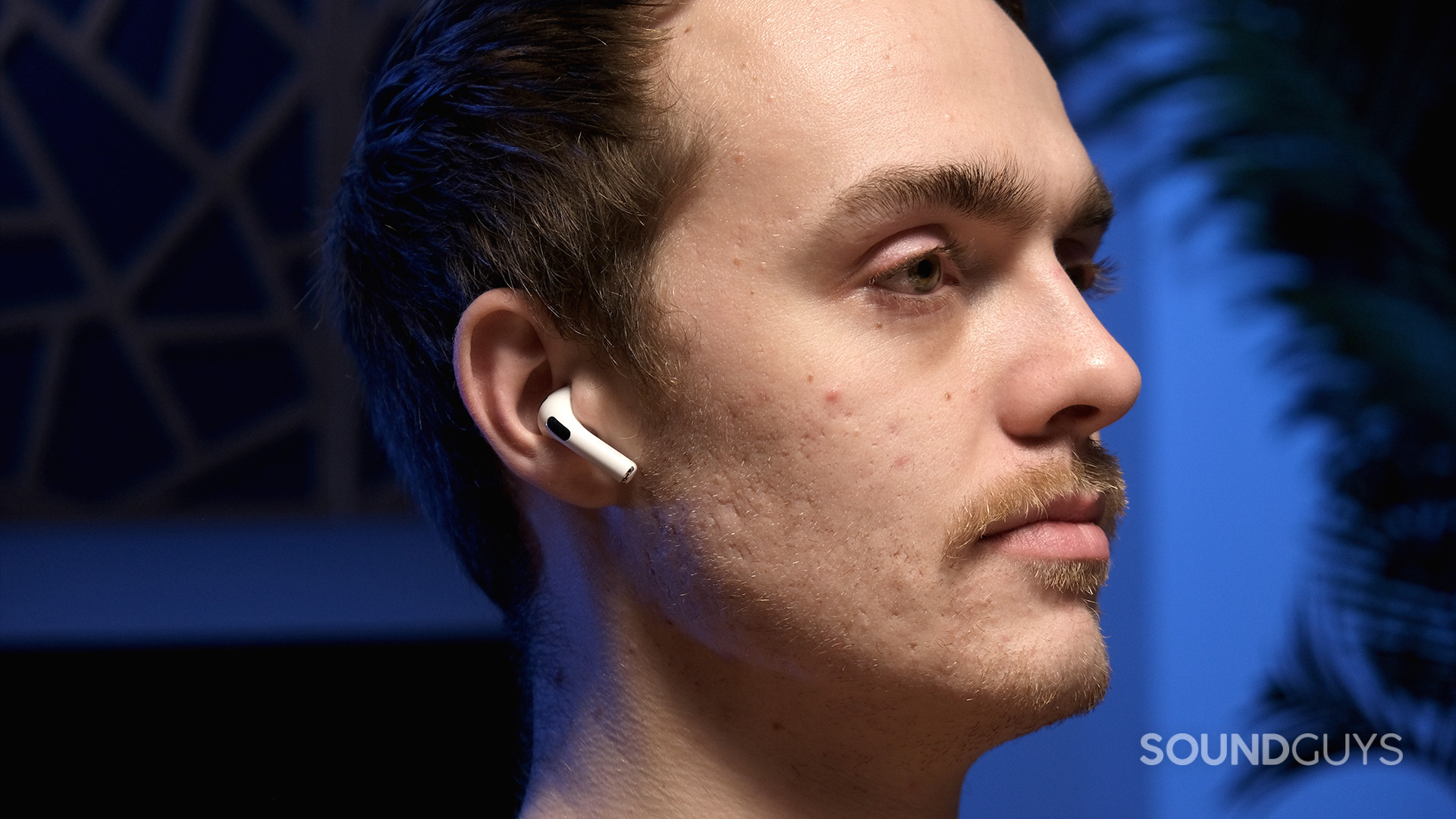
On the iPhone, the Apple AirPods (3rd generation) microphone sounds better than just about any true wireless option on the market. However, with pretty much every pair of AirPods we’ve reviewed, including the AirPods Max, that sound quality takes a hit when paired with Android devices or different computers. In comparison, the Samsung Galaxy Buds 2 just doesn’t sound as good, but it should sound a little more consistent across platforms.
Apple AirPods (3rd generation) mic sample (Ideal):
Samsung Galaxy Buds 2 mic sample (Ideal):
Apple AirPods (3rd generation) mic sample (Windy conditions):
Samsung Galaxy Buds 2 mic sample (Windy conditions):
which microphone sounds best to you?
Should you buy AirPods (3rd generation) or the Samsung Galaxy Buds 2?
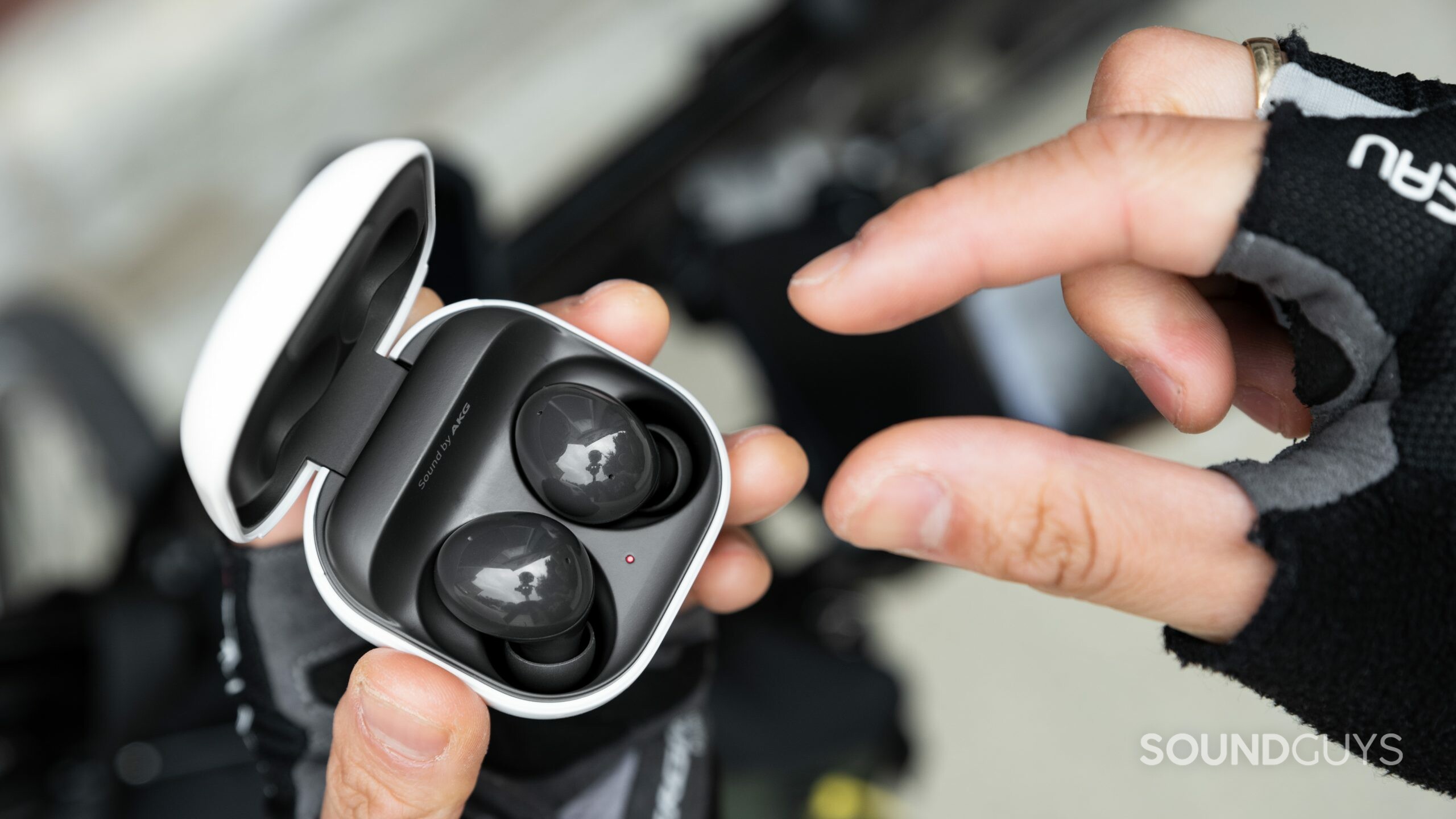
This is a pretty simple match-up because, at the end of the day, both of these products are rooted in different operating systems. If you’re an iPhone user, the Apple AirPods (3rd generation) offers software integration and a host of additional features, and the Samsung Galaxy Buds 2’s companion app isn’t even available. Similarly, if you’re an Android user (and especially a Samsung user) the Samsung Galaxy Buds 2 brings adjustable ANC, an ear tip fit test, and EQ presets, and the AirPods (3rd generation) doesn’t.
Of course, you can use either of these pairs of true wireless earbuds on either platform, but you’re limiting your options out of the gate pretty substantially.
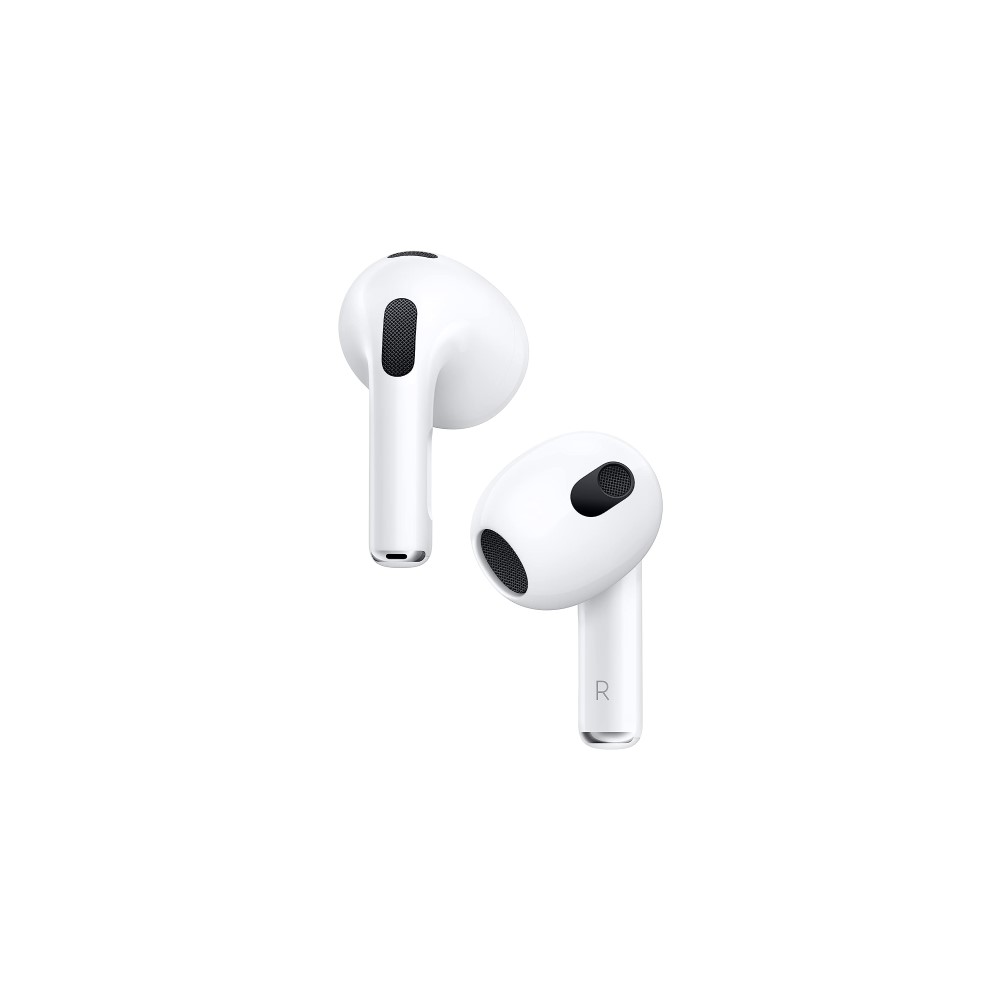
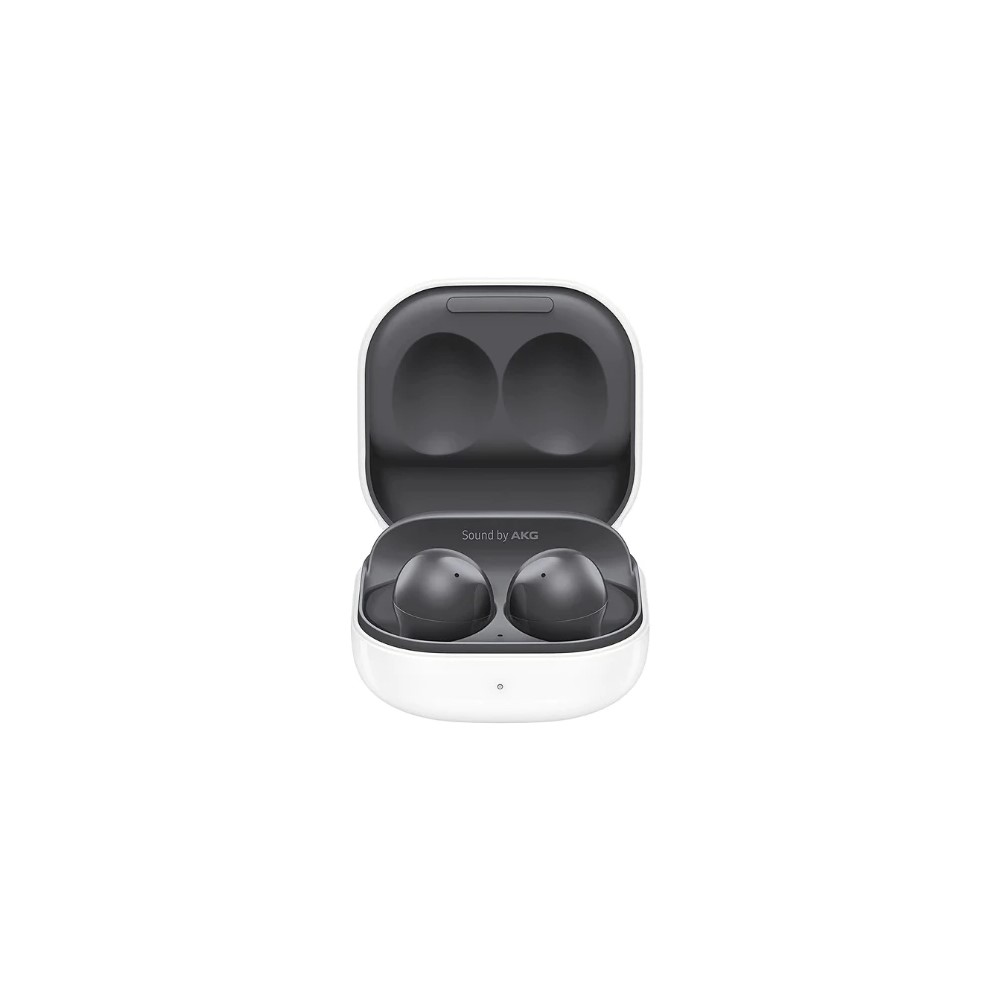
What are some good alternatives to the Apple AirPods (3rd generation) and the Samsung Galaxy Buds 2?
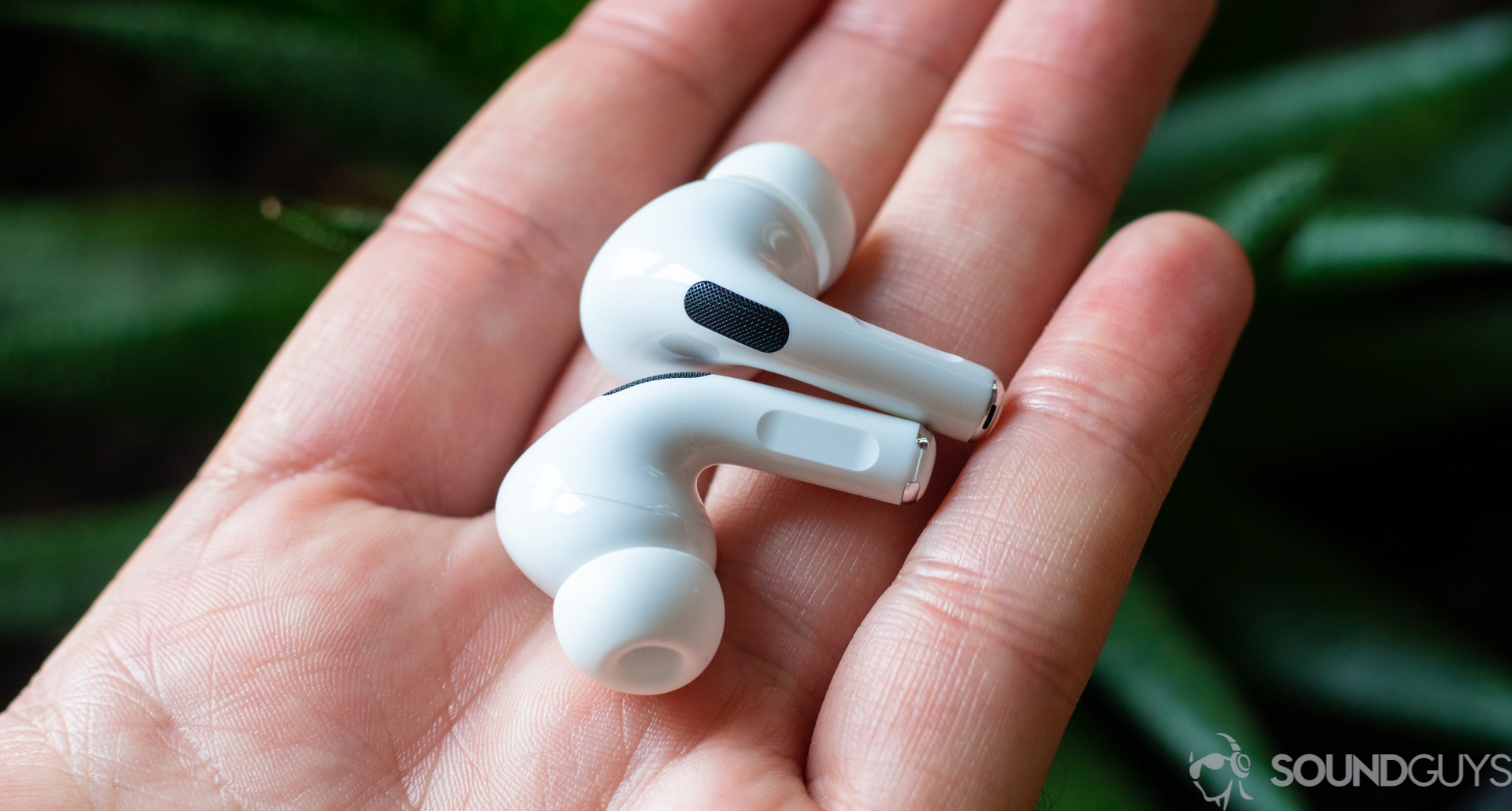
While it’s clear which of these two products to get if you’re just comparing them to each other, there are plenty of great alternatives out there. For starters, if you’re an iPhone user, the best true wireless option remains the Apple AirPods Pro (2nd generation). These true wireless earbuds feature all the same options as the AirPods (3rd generation), plus they have silicone tips and ANC — basically they don’t have the major shortcomings of the newer counterpart.
Of course, Samsung fans who want to be the most up to date will want to take a look at the Samsung Galaxy Buds 2 Pro, as well. The Buds 2 Pro features dramatically better ANC and an improved IPX7 rating, though it’s also quite a bit more expensive.
If you’re on Android, the Sennheiser CX Plus True Wireless brings a lot of the same features as the Galaxy Buds 2, but it also offers aptX support, so more than just Samsung users will get something nicer than AAC. These earbuds are a little more expensive than the Galaxy Buds 2, but if you don’t care about ANC, you could also go for the $129 USD Sennheiser CX True Wireless, which is otherwise identical.
Maybe you want something that works with both iOS and Android, in that case, turn your attention to the Beats Studio Buds and Beats Fit Pro. Android users can download the Beats app from the Google Play Store to customize their experience with either pair of Beats, and to download firmware updates. Both the Studio Buds and Fit Pro have an IPX4 rating, but only the Fit Pro has an ergonomic wing tip to keep the buds in place during vigorous movement. No matter which set of Beats you get, you can enjoy active noise canceling, fast charging, and a sealed design.
Frequently asked questions about the AirPods (3rd generation) and Galaxy Buds 2
Great question! Here at SoundGuys, we have plenty of versus articles that give you a detailed sense of how one product compares to another. In sum, the Galaxy Buds 2 is a better product if you want to cancel out noise since it has ANC, something the Galaxy Buds Plus lacks. Both sets of earphones have an IPX2 rating, support the same codecs (SBC, AAC, Samsung Scalable Codec), and support Wireless PowerShare. Only the Galaxy Buds 2 has an ear tip fit test, but unlike the Buds Plus, the Buds 2 lacks ear wings.
If you have time, we recommend you read our Samsung Galaxy Buds Plus vs Galaxy Buds 2 article.